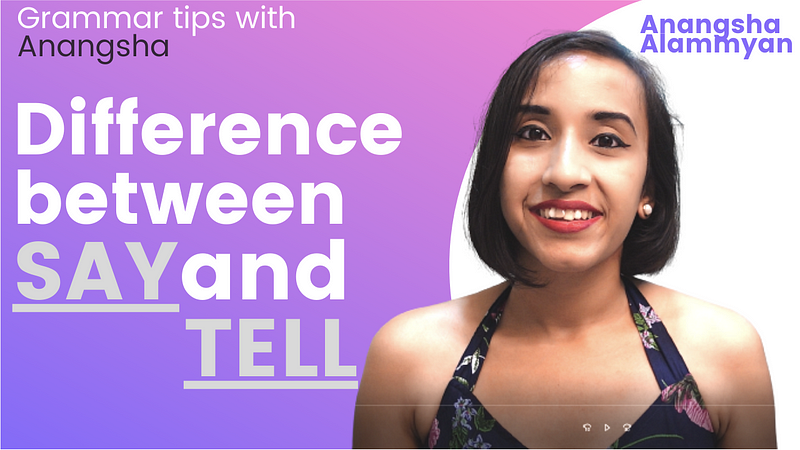What’s the Difference Between “Say” and “Tell”?
If you get confused between the two, you’re not alone. Here’s how to never forget the distinction again.

Grammar tidbits with Anangsha
What’s the Difference Between “Say” and “Tell”?
If you get confused between the two, you’re not alone. Here’s how to never forget the distinction again.
As my High School English teacher used to say:
You say something. You tell someone.
Example 1
He said, ‘The earth is round.”
He told me that the earth is round.
Example 2
I heard him say that the class was canceled.
I heard him tell Arjun that the class was canceled.
Example 3
Ron made a face at Snape and said, “Poisonous toadstools don’t change their spots.”
Making a face at Snape, Ron told Hermione that poisonous toadstools don’t change their spots.
Get the drift?
It’s really as simple as that: You say something. You tell someone.
Edge cases
- You can also use tell without a personal object in few expressions, which are fixed expressions like telling the truth, telling the time, telling the difference, etc.
- We can use say before phrases like a word, a name, or a sentence. An example would be: “Don’t say a word.”
- If you want to use say in conjunction with a person, add a to in between. Example: He said to Arjun that the class was canceled or “The class is canceled,” he said to Arjun.
Watch this in video format here:
What trick do you use to remember the difference between say and tell? Let me know in the comments.
Note: If you enjoyed this, I plan to make a series called Grammar Tidbits with Anangsha. If you don’t want to miss the next one, make sure you follow me and keep an eye out for the latest stories on Freelancer’s Hub.
Click here to join my email community of 1200+ innovative thinkers and ambitious action-takers.


